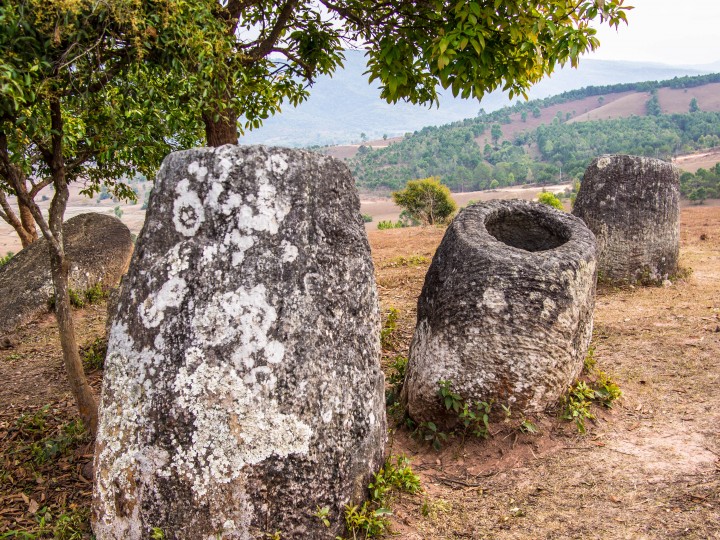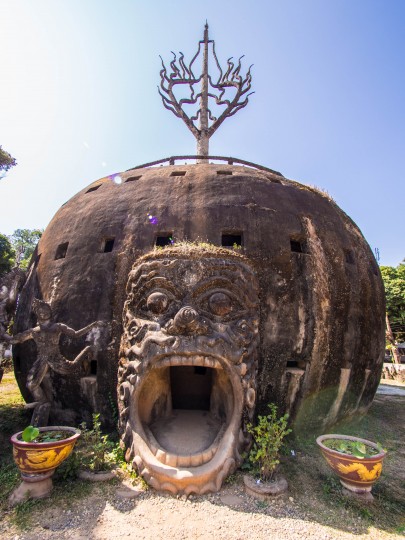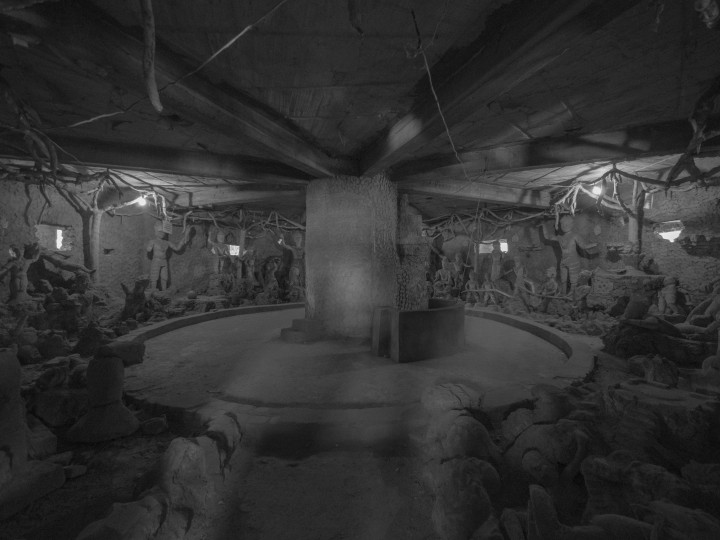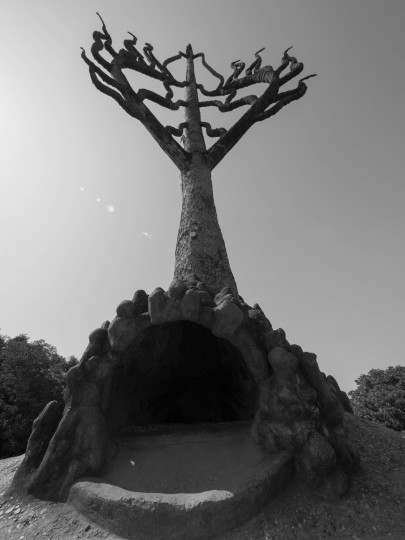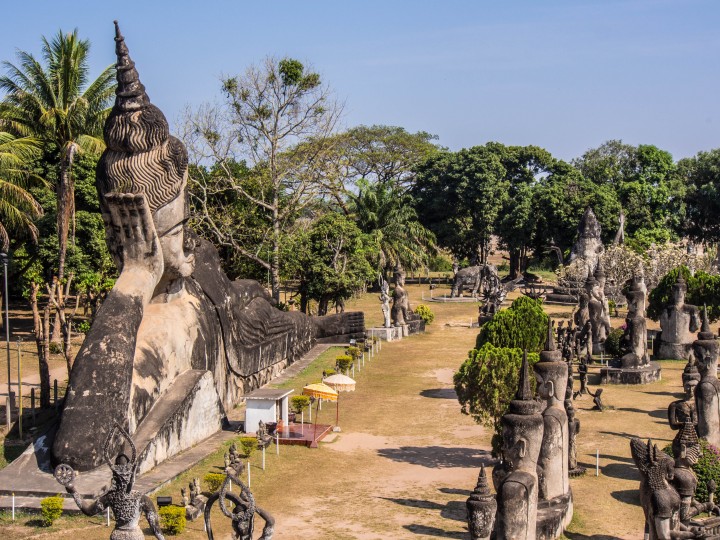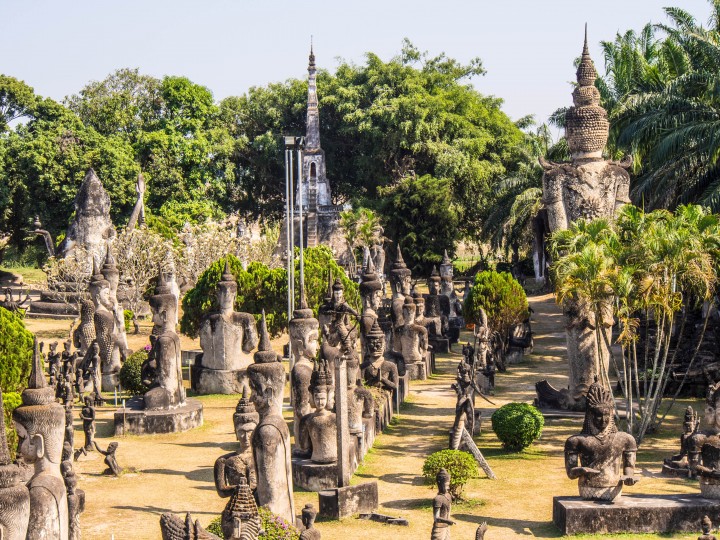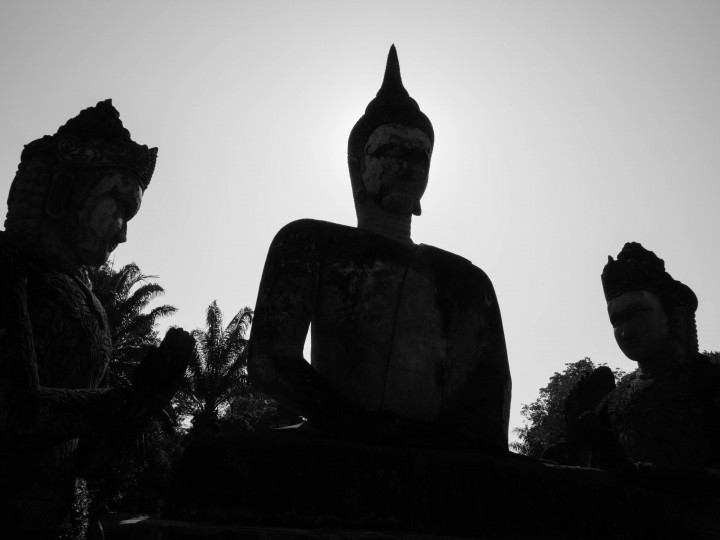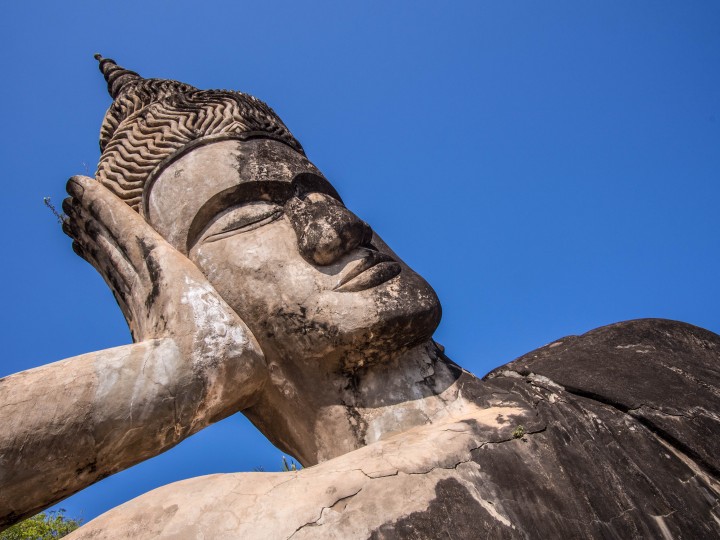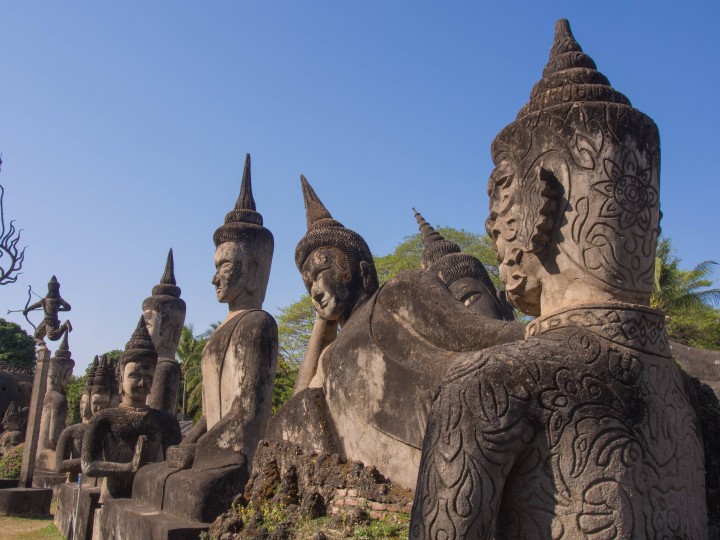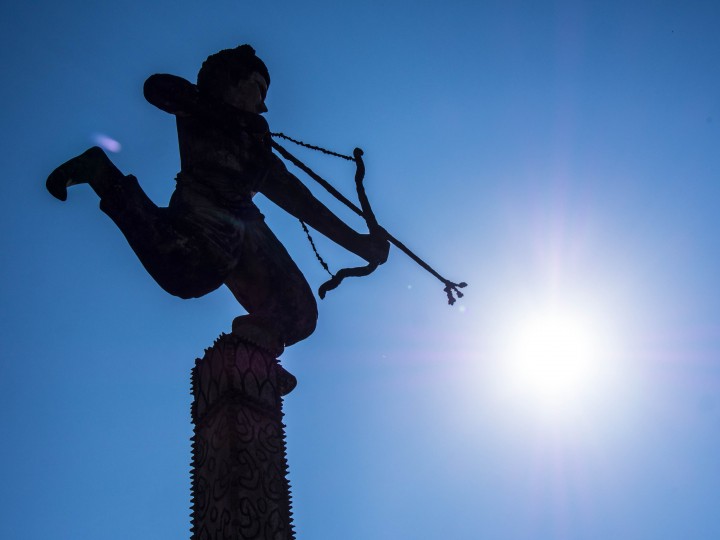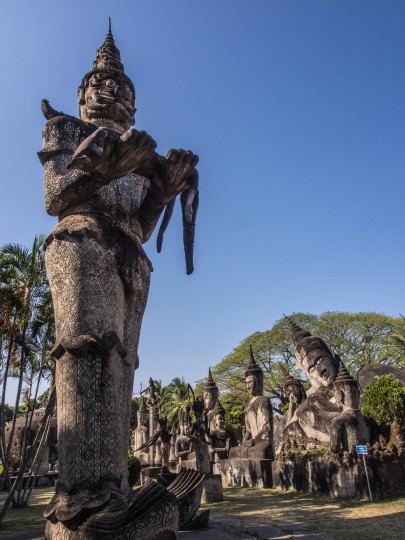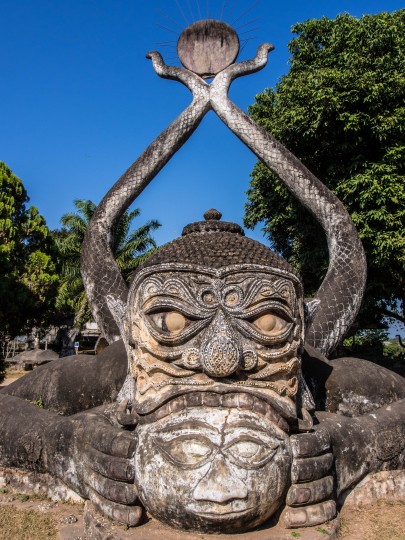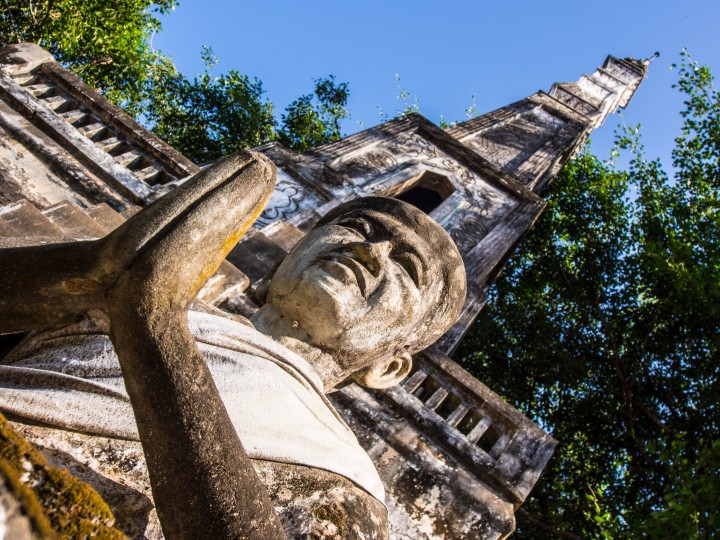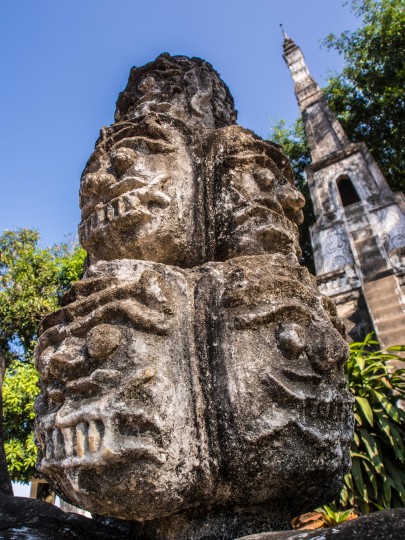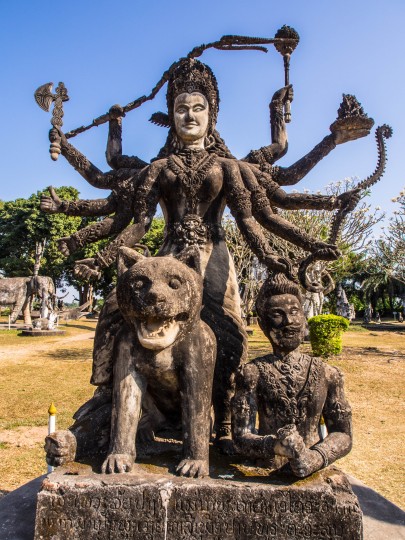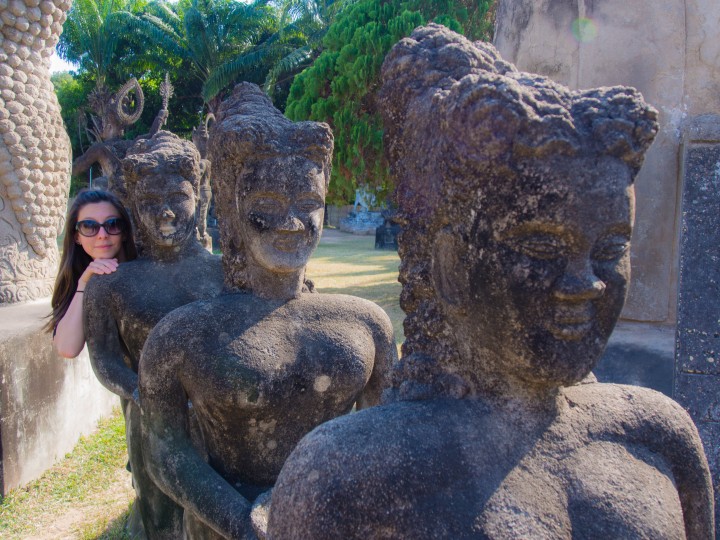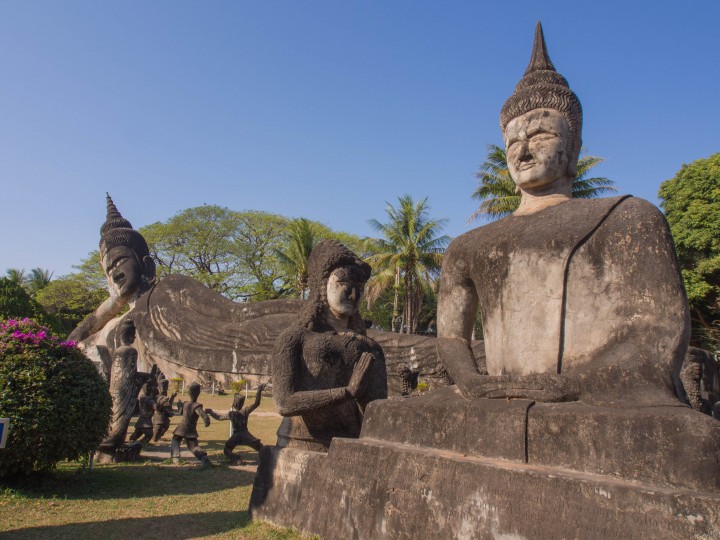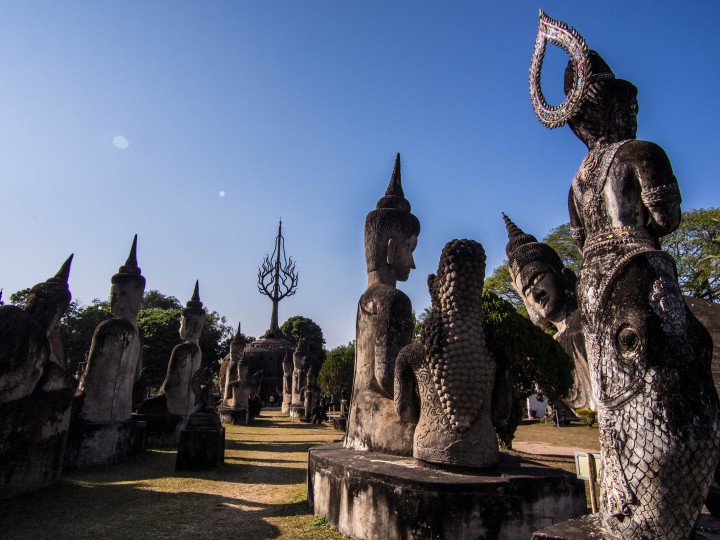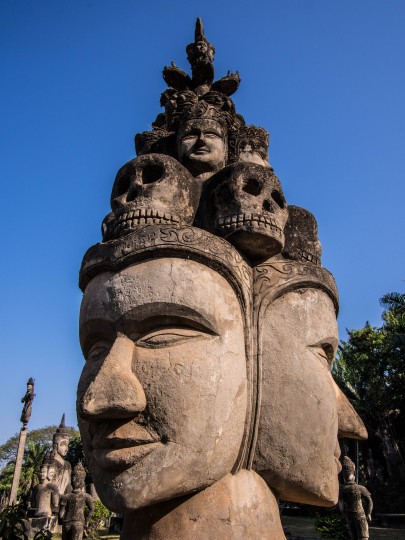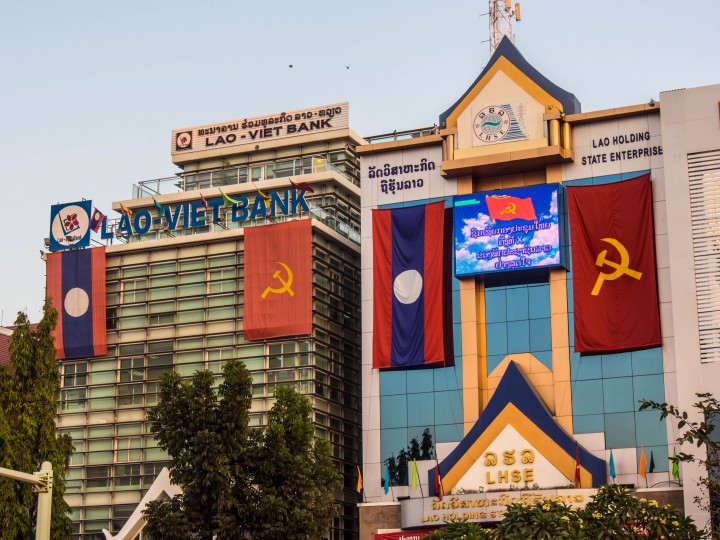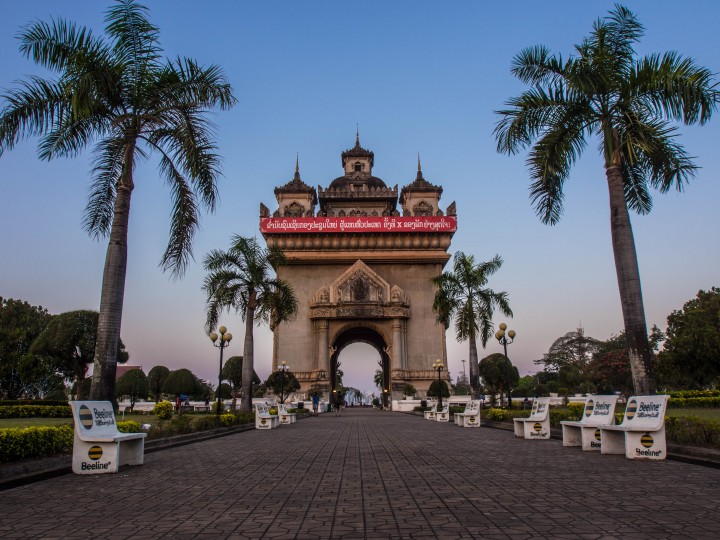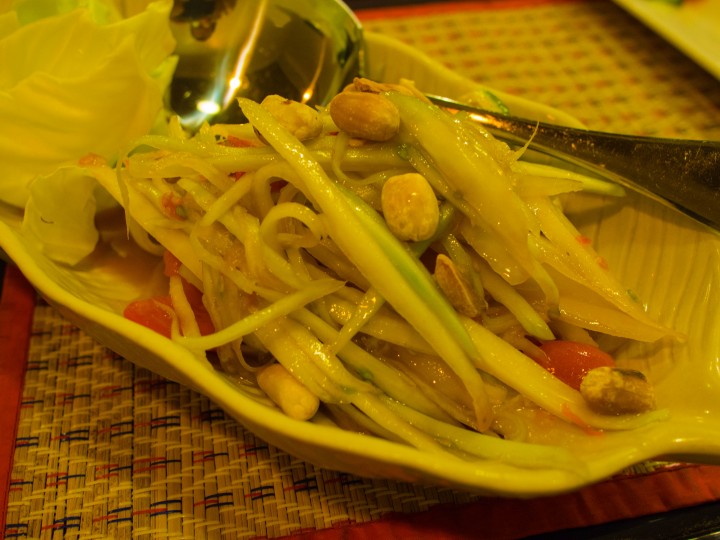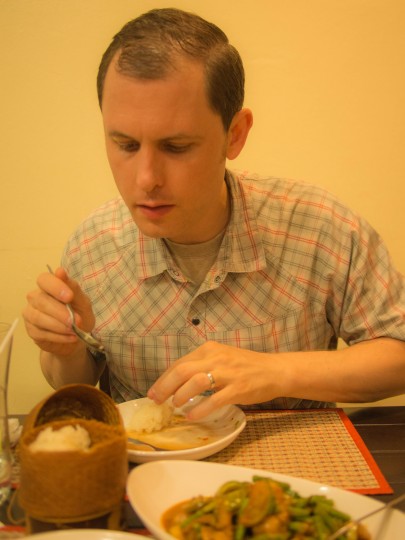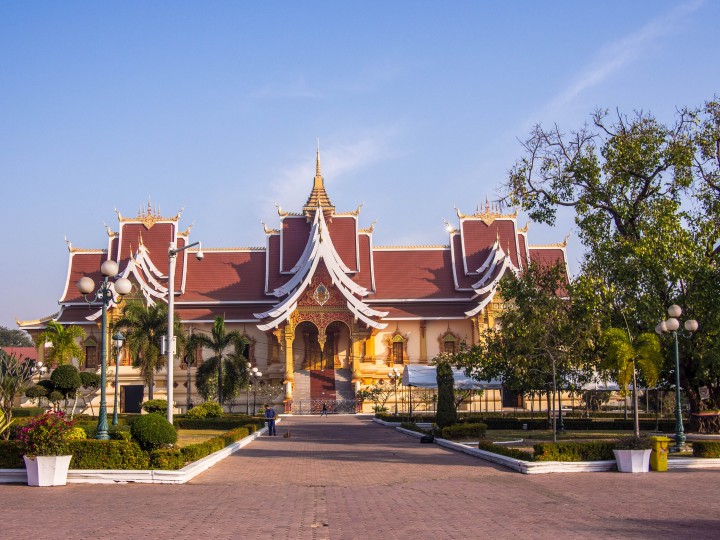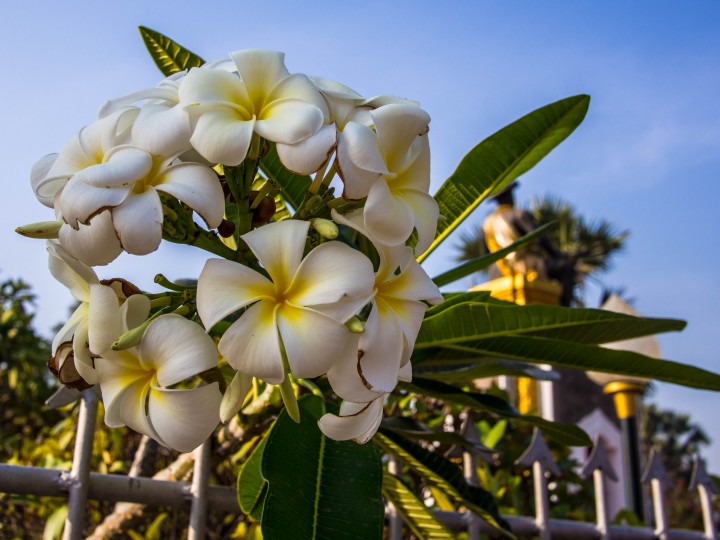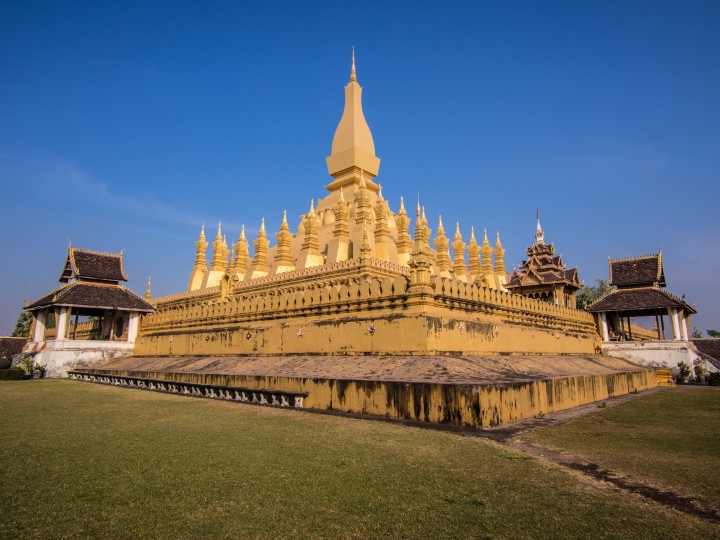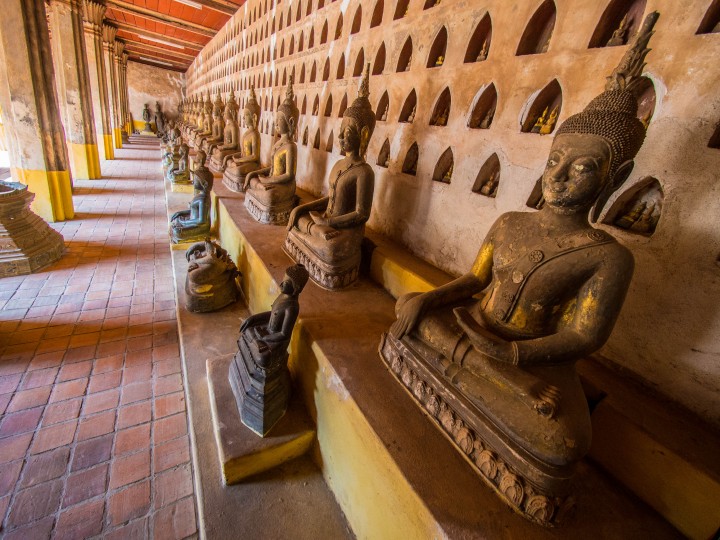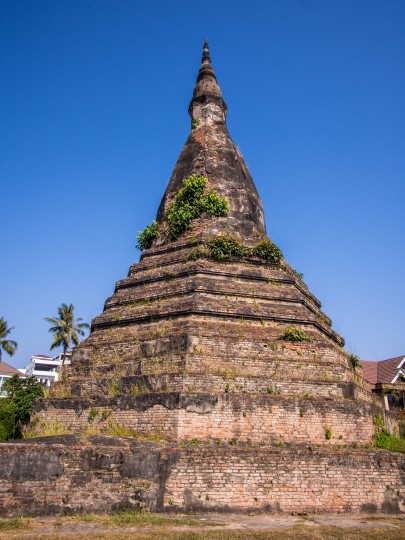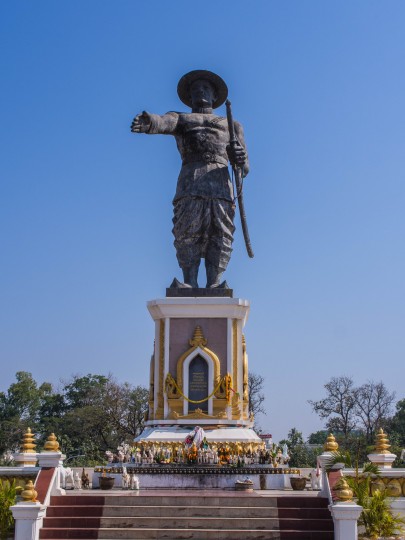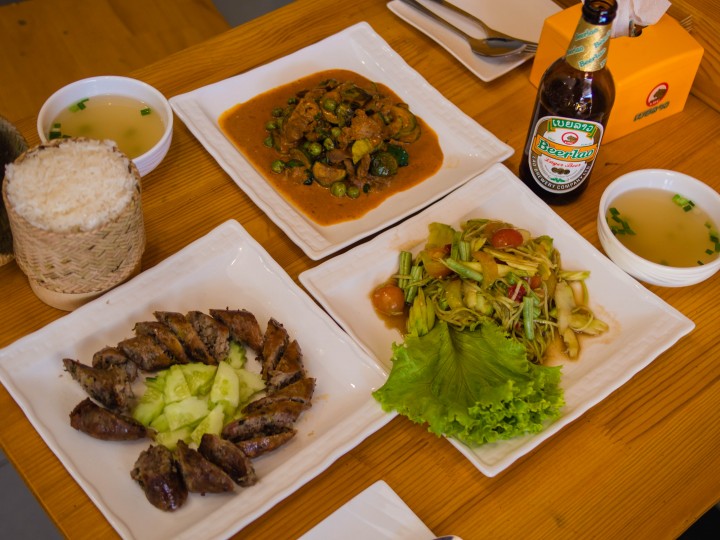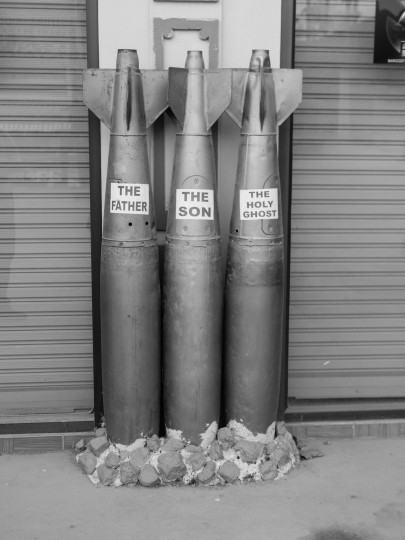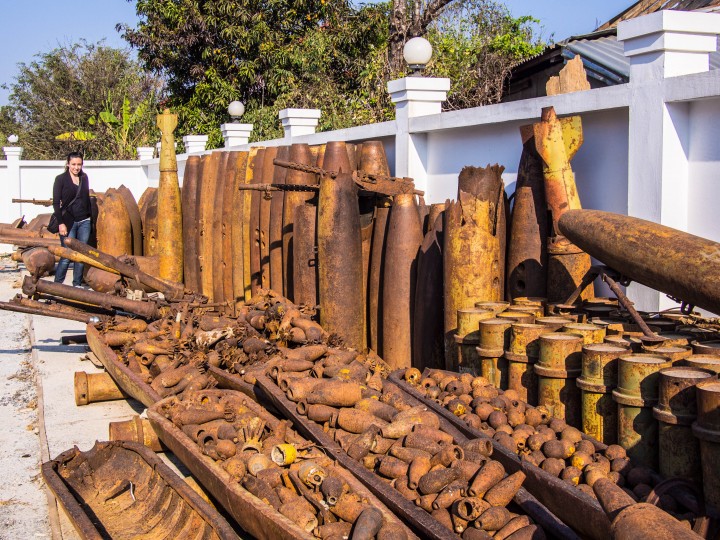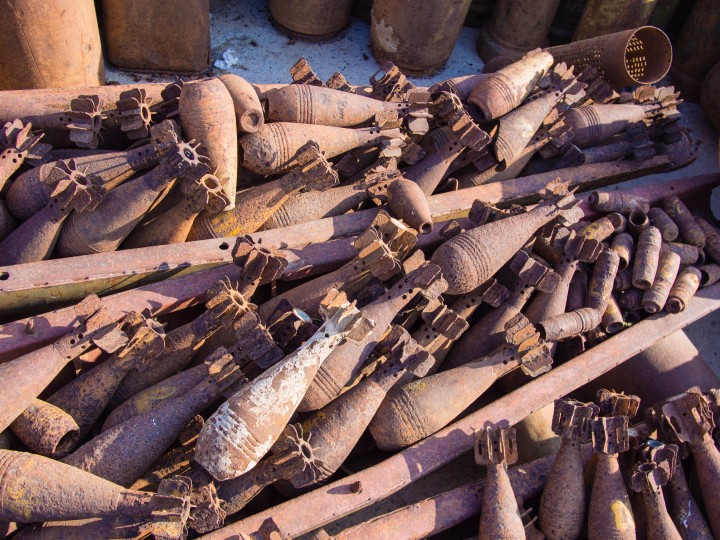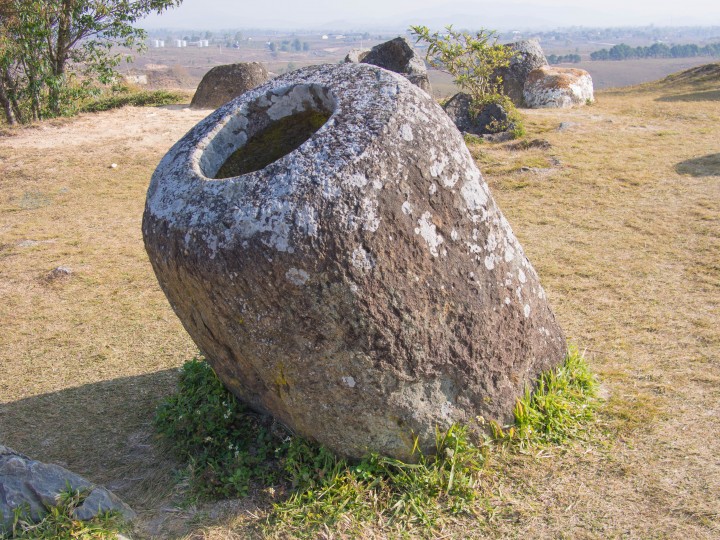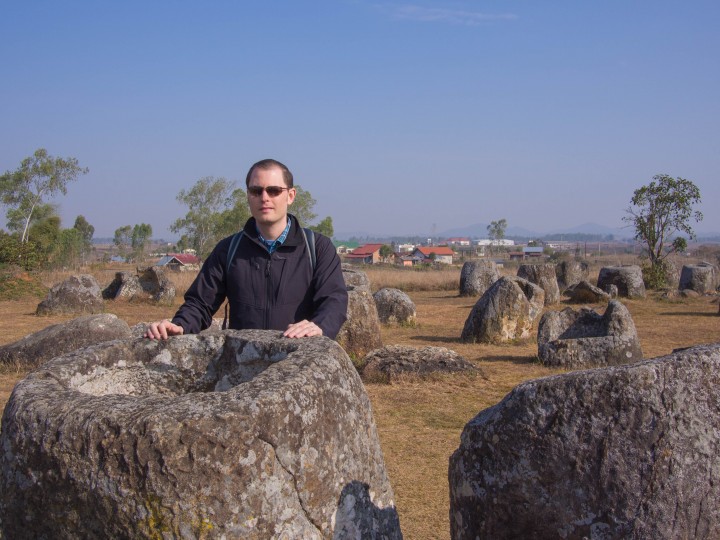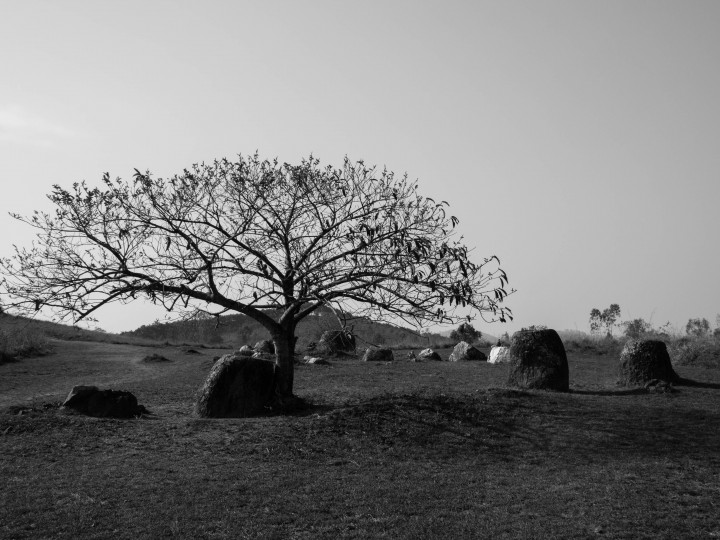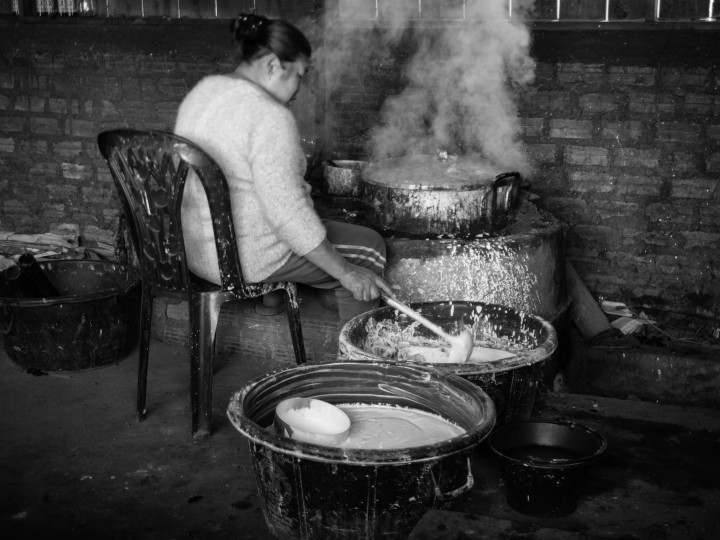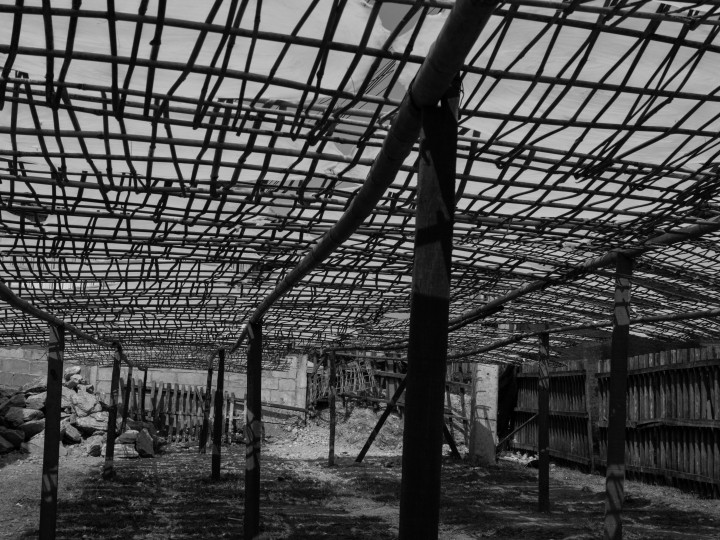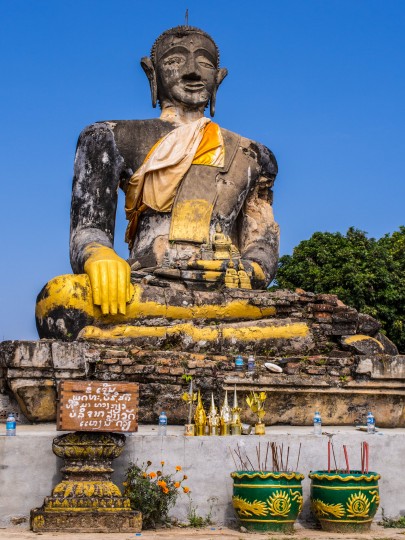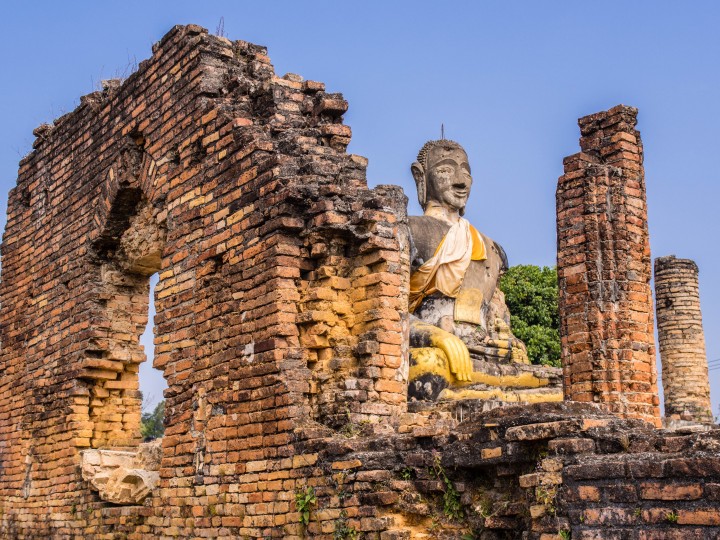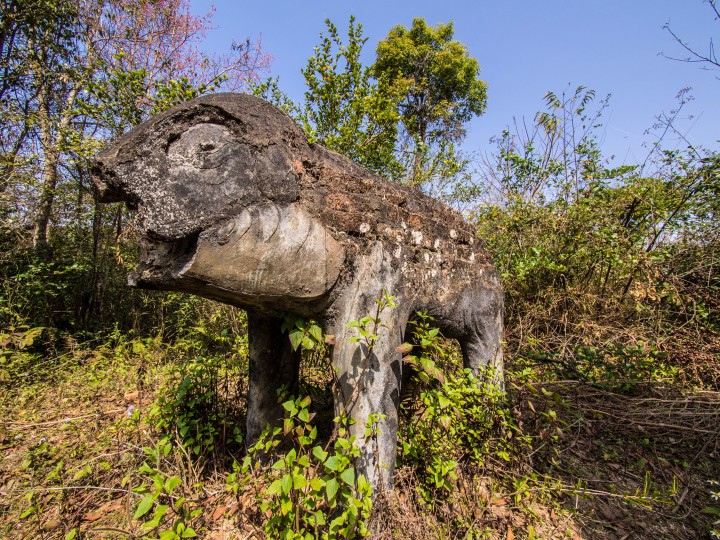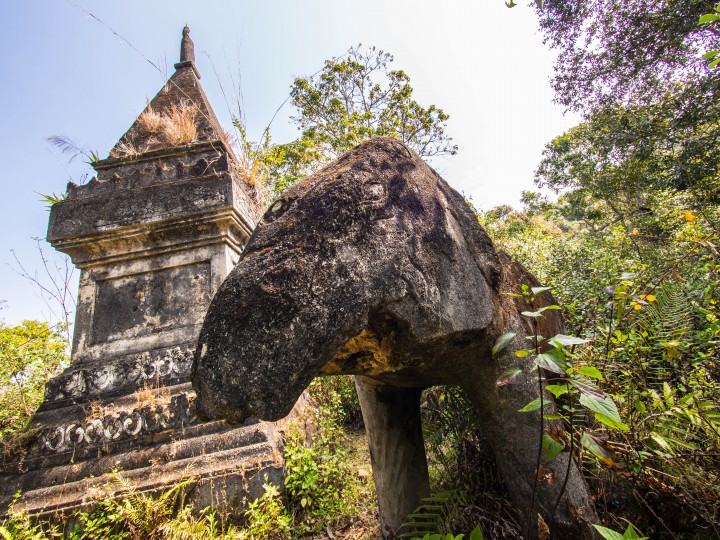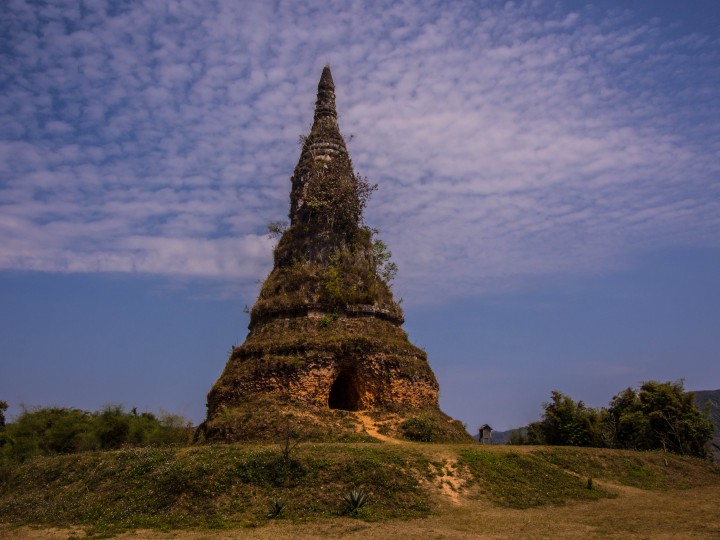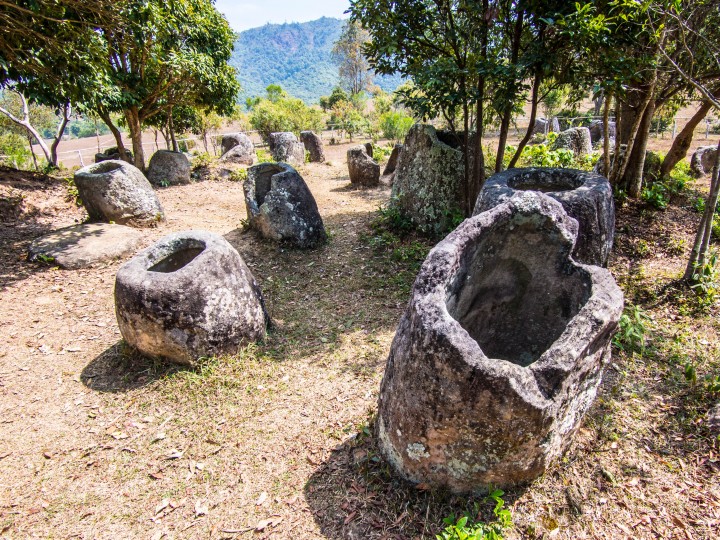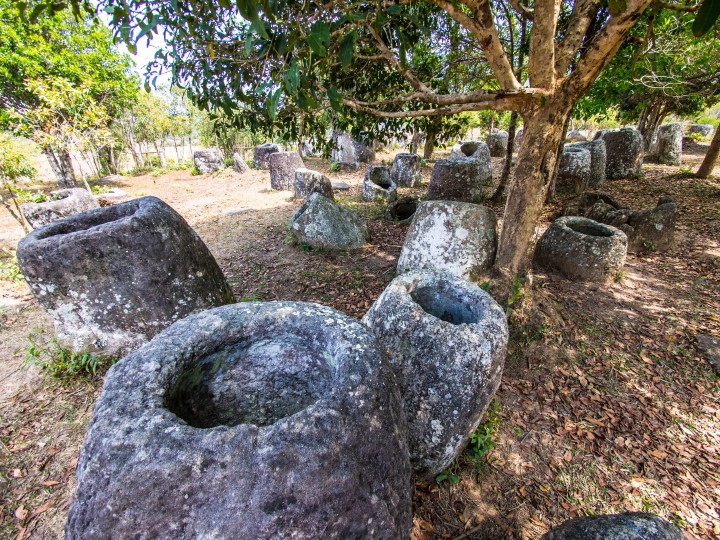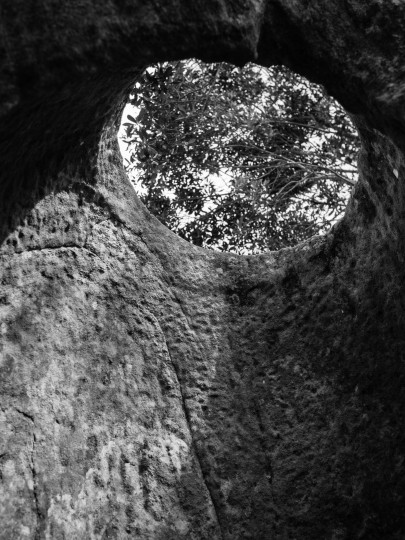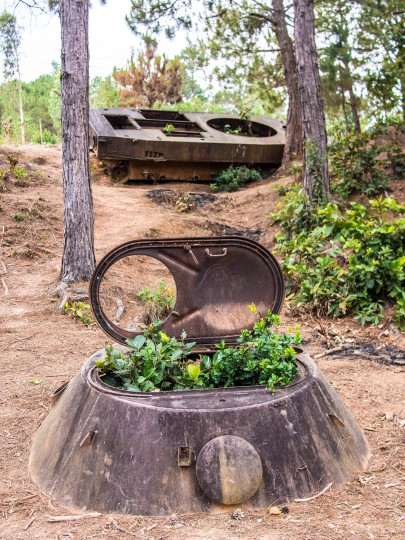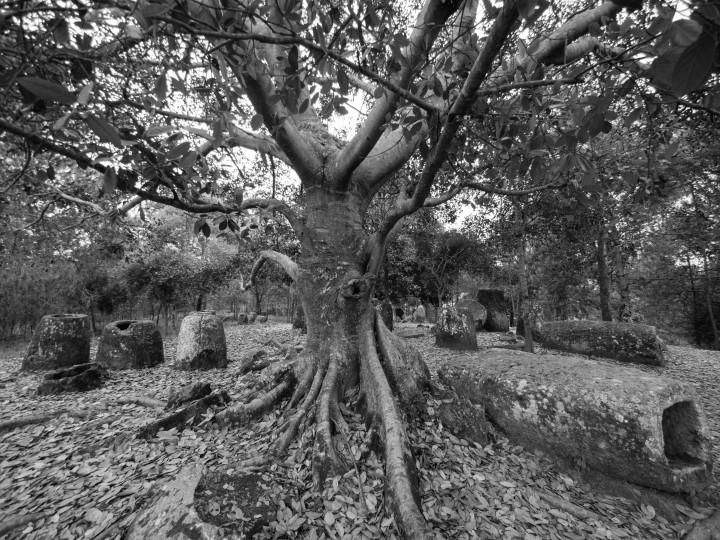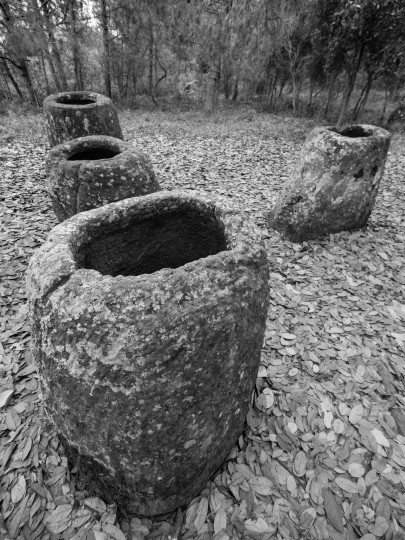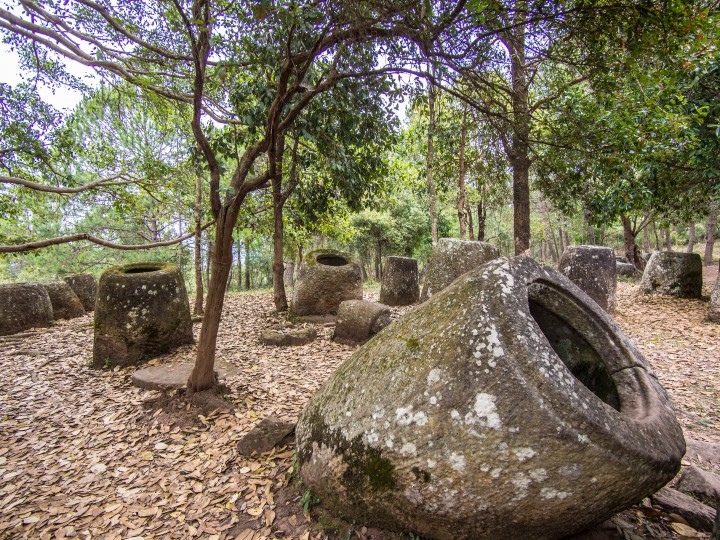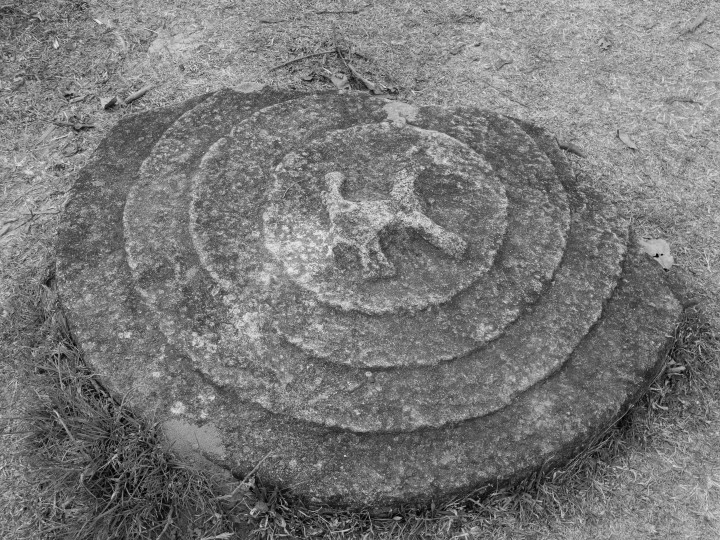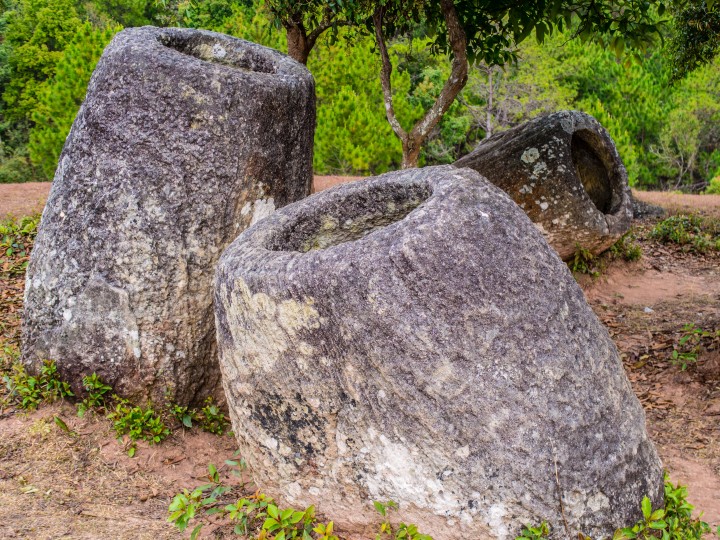If you work your way from Bangkok, through Siem Reap and Phnom Penh, and onward to Saigon, you’re likely to see some of the same faces: at ancient ruins and museums, on buses and trains, on the street and in restaurants, and finally at youth hostels and guest houses. Many of the youth hostels share a common item on the breakfast menu: banana pancakes. We’ve referenced this before when visiting Myanmar. Geographically, the capital Yangon would be a nice start to the “Banana Pancakes Trail,” but at this point you’re just not going to see large groups that look like they’re on a high school field trip or college spring break. I expected Laos to be a similar break from the larger tourist crowds of Thailand and Cambodia, but I was definitely wrong. Laos is far less developed and a bit less accessible than it’s neighbors to the south, but that hasn’t stopped visitors. The combination has been interesting to watch.
Laos has been under a communist government since around 1975, when new regimes came into power in Cambodia and Vietnam as well. The U.S. had spent the last decade indiscriminately bombing the country, dropping a total of around 270 million cluster munitions all over the country. Laos has been bombed more than any other country in the world per capita. More bombs were dropped in Laos during the Indochina War (“Vietnam War”) than by all sides during World War II. It’s estimated that around 80 million cluster bombs failed to detonate when dropped in Laos, making a lot of the land in the country extremely dangerous to develop. Diplomatic relations have improved significantly in the last decade or so and a lot of progress has been made clearing unexploded ordinance (UXO). However, the large amount of UXO that remains scattered throughout the country is one factor in Laos remaining very poor and underdeveloped. From a visitor’s perspective, major tourist sites (like the plain of jars) have been largely cleared of UXO with help from international organizations.

The flight from Bangkok to Vientiane is about an hour. The airport in the capital has a pretty small international terminal, with a single large room for processing arriving visitors. Although a bit chaotic, you can definitely get a visa on arrival. Vientiane is smaller than other Southeast Asian capital cities like Phnom Penh. There are some rough areas as you drive through the city, but the areas around the major tourist sites have large clean sidewalks and are nice to stroll around freely. The main sites in Vientiane (Pha That Luang, Wat Si Saket, Chao Anouvong Park, That Dam) can be visited in a single morning. The other major site near Vientiane is Buddha Park, which is about an hour bus ride away. We spent one night in Vientiane and used our arrival day there to visit Buddha Park. Tour agencies in Laos will charge around $150 per day to include private transportation. The bus fare from Vientiane to Xieng Khuan (Buddha Park) cost about $3 for two people, round trip. Granted, this may not be the approach for everyone, but it worked well for us. It’s been a while since I was able to say “if this is the tourist bus, where are all the tourists?” The budget for both of us in Vientiane including meals, transit, and site admissions was less than $20 per day. The sites were beautiful and we had a nice time, but you really only need like a day and a half in Vientiane.

On our third day we caught an afternoon flight to Xieng Khouang, the city closest to the Plain of Jars sites. This was the biggest attraction for us in Laos. The Plain of Jars stands out as one of those great ancient mystery ruins like Stonehenge or Easter Island. It is still unknown the purpose of the huge stone jars. Places like that hint at a distant shared humanity. They create an attraction that transcends just the simple beauty of a place. Unfortunately, the Plain of Jars is pretty difficult to access. If Vientiane is kind of small, Xieng Khouang is absolutely tiny. The airport is a one-room shack, even smaller than the outpost we landed in in northern Kenya after leaving Somalia. The town is dusty dirt roads and shanties, with one major two-lane road that has all the main businesses. The contrast of such an underdeveloped town and western tourists converging on the place is pretty entertaining to watch at times. The infrastructure is definitely not there to receive lots of visitors. We stayed at one of the nicest places in town, a guesthouse boasting AC and Wifi in a choice location, which set us back a whopping $19 per night after taxes.

Dining options in Xieng Khouang are pretty limited. You have some local establishments: open air rooms where people are doling out thick curries and stews and grilled meats from big open pots sitting curbside, likely lightly flavored with motorcycle exhaust and street dust. While possibly a gustatory adventure, I suspect a meal at one of these establishments would have me clutching a toilet for days, pleading for death. The other options are several restaurants clearly aimed at foreign visitors. Why “clearly?” Well, if menu selections of pizza and hamburgers aren’t sufficient enough indicators, several of them have the word “Falang” (like “Farang” sp?) in their names. Falang translates to “foreigner” in Thai, so there you go. I understood the word as a derogatory term, often used when referring to the creepy old westerners that go to Thailand seeking out much younger female companionship, but I guess the word is supposed to be neutral. We went to a place called “Bamboozle,” with the most exotic items being some Pad Thai and Fried Rice. What was most impressive about the place was that here we were, in a tiny backwater town in Laos, and we had some fried rice with the flavor profile of something you might expect at a “Golden Corral” buffet restaurant. It was clean though, which was the most important thing at this juncture. They did offer an assortment of chili pastes and fish sauce, so you were still able to make it taste marginally appropriate. Looking around the place though, I totally got it. If they served up spicy stuff to some of these people, they just wouldn’t stay in business. The mix of visitors is like, lots of elderly Europeans and a handful of younger couples and families. In the table behind us was a lady in her forties trying to request a “chicken salad” to the waiter who clearly spoke very little English. Hearing her say “can you just put some cold chicken slices over the Laotian salad” was pretty entertaining. For one thing, the concept of salad here is not what you’d get at, say, a Chik-Fil-A, which was clearly what she expected. When she received some kind of stir-fried spicy concoction of chicken and hard to identify vegetables, she was even more frustrated that she couldn’t properly convey her unhappiness to the non-English speaking staff. So, yeah, the Pad Thai and fried rice were a bit bland, but I get it.

Fortunately, we were able to enjoy a few meals of Laotian food during the time we spent in Vientiane. Everything we were able to sample was like a hearty, homestyle version of Thai cuisine. We had a couple of curry dishes that were similar to Thai curry but lacked some of the contrasting flavors you would expect in any Thai dish. Spices like garlic and ginger are tossed in the sauce in huge chunks, making for some dangerous flavor explosions if you just dig into it without careful inspection. On our first night, we had a frog curry that was pretty unique. The mango and papaya salads were surprisingly some of the spiciest stuff we were served. Even those things differ considerably from their Thai counterparts, less sweet and sour notes, a bit more spice and fish sauce, and some vegetable additions that neither of us recognized. We enjoyed most of the food, but to be perfectly honest it left us wanting the Thai versions were are more familiar with.

We had a full day set aside in Xieng Khouang to visit the Plain of Jars sites. We booked a private driver and headed out around 0800, trying to beat any of the other groups. We were largely successful, only encountering a small group of German retirees at the first of three sites. At many of the stops during the day, we were completely alone. The Plain of Jars sites are difficult to convey in photographs. You walk into the formations, completely surrounded, which never come across quite right in still photos. All of the locations had clear markers where UXO had been removed and areas that were cleared, further bringing home the reality of how many potentially deadly explosives remain. Every single site had visible bomb craters, usually making straight lines dozens of meters apart. We had about a ten-hour day and were pretty wiped out when we got back to our guesthouse. Driving around in rural Laos, it’s obvious why the 30-minute flight from Vientiane translates to a 6-hour drive. Roads are in very poor condition. Flat gravel is often the best you will see, with many being long stretches of very uneven clay. For any visits to Laos, I definitely recommend limiting overland transit.

That wraps up our time in Laos. We head back to Thailand and will be staying in a resort near Ko Samui for a few days as our next stop. Below is our Laos gallery. Until next time…

